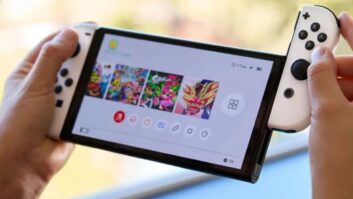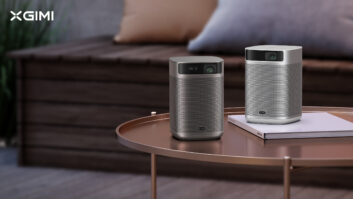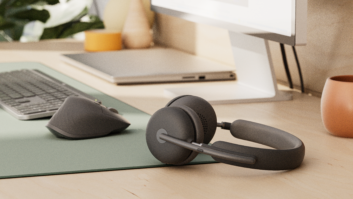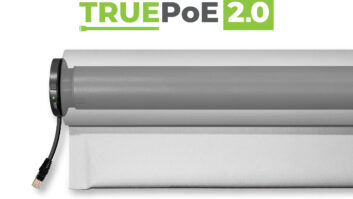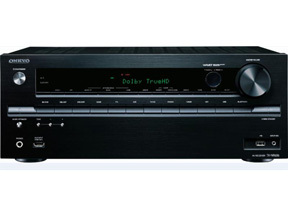
HDCP.
Have there ever been four letters that have caused such a collective shudder from custom integrators and specialty retailers everywhere? It works; it doesn’t work; it works again. Often there is no rhyme, reason or understanding as to why.
Now a new version of this copy protection — called 2.2 — will be required for displaying UHD content, and if any part of the signal chain is not HDCP 2.2-compliant, then there will be no 4K picture. Adding to the confusion is that products can be HDMI 2.0 certified but not HDCP 2.2.
Integrators and dealers are expected to be at the forefront of information for clients, and when consumers buy a new 4K TV, hook up their (eventual) new 4K source, and get no picture, the first angry phone call will be to the dealers. And it will likely include the phrase, “Why would you sell me a system that wouldn’t work?”
Admittedly the whole HDMI 2.0 and HDCP 2.2 issue is a very confusing and nebulous one, but the bottom line is that HDCP 2.2 is about protecting 4K content, and for a 4K image to work, it will have to pass through a chain of HDCP 2.2-certified and hand-shaking components.
Although there is currently only one true 4K source on the market – the Sony media player – there are more on the immediate horizon. For instance, the new 4K Joey from DISH is expected to be available this summer, 4K Blu-ray players will start appearing later this year, and ultimately we’ll witness the inevitable arrival of new cable boxes and 4K media players like Apple TV, Roku, and others. And if you want to view this 4K content, every device in your video chain must have HDCP 2.2
One thing for certain is that there is a real shortage of audio/video receivers that support HDCP 2.2. And because the receiver is the connection hub for virtually every system installed by ESCs and dealers, and frequently relied upon to send video to a display via a single HDMI cable, this is going to be the inevitable shortcoming in systems sold to consumers in the months to come.
Current limitations: Several manufacturers point out that although some A/V receivers on the market tout both HDMI 2.0 and HDCP 2.2, these models use a chipset capable of supporting a lower bandwidth of 10.2Gbps (similar to HDMI 1.4) and not the full, maximum 18Gbps capability of HDMI 2.0. Specifically these chips won’t be able to handle 4K/60 with 4:4:4 color sampling; they are held to a bandwidth-limited 4:2:0 color space.
Whether future 4K sources will use full 18Gbps bandwidth – such as 4K Blu-ray players supporting high dynamic range and the BT2020 color gamut – isn’t certain. But AVRs supporting them are certain to come as the chipsets become available.
Current chipsets: The most commonly used HDCP 2.2 chip right now is the Silicon Image SiL9679, which “supports 4K resolutions that include 4K2K 24, 25, and 30 frames per second,” said Kristin Uchiyama, senior manager of global communications. “In these resolutions, color support is 8-bit RGB/YCbCr 4:4:4 as well as 8/10/12-bit YCbCr 4:2:2. Four-K2K 50 and 60 frames per second color support is 8-bit 4:2:0. These are in addition to all of the standard 480/525/720/1080p resolutions that people have used for years.
The company’s new SiL9777, however, supports the full 18Gbps rate of HDMI 2.0, which adds support for 4K 50/60. “In these resolutions, color support is 8-bit RGB/YCbCr 4:4:4, as well as 8/10/12-bit YCbCr 4:2:2, and the 8-bit 4:2:0 mode,” Uchiyama said.
Many current Onkyo and Integra AVRs and preamp processors, as well as some currently available Sony AVRs, feature HDCP 2.2 with support for lower bandwidth HDMI 2.0. And the companies point out that that was all they could support given chipsets available last year.
“The chipset we use allows for HDMI 2.0, HDCP 2.2 copyright protection and color space 4:2:0,” said Onkyo and Integra product manager Brian Sandifer. “We choose this chipset because all three of these actually exist and are now needed in the consumer Ultra HD space, and this is the only chipset that will support all three, which is currently available in the marketplace. So when HDCP-2.2 content is streamed through our AVR, it will result in both picture and sound; assuming of course that the display device is HDCP 2.2-compliant,” Sandifer continued.
No 4:4:4 content yet: “Color Space 4:4:4 can eventually exist in the consumer space,” Sandifer said, “but there is no content in existence to support it. If and when it ever does materialize (ie: Deep Color for Blu-ray was in the spec but has never materialized), you will still, of course, need to be HDCP 2.2-compliant for the content to pass in full resolution, and you will have the option to turn off the 4:4:4 colorspace if devices down the line cannot support it (unlike HDCP 2.2, which you cannot turn off). Some other products are touting color space 4:4:4 capable, but without being HDCP 2.2-compliant, and with no content to support it, it is a bit of a moot point.”
Sony’s current product offerings are similarly bandwidth-limited, said home audio senior product manager Aaron Levine. “We want to point out what will determine what type of content is available to consumers is not just HDMI 2.0 but copyright protection with HDCP 2.2. It is unlikely that copyright protection will utilize the full 4K60P bandwidth in the near future due to bandwidth (file size) and production (film) issues. Also, the chipsets currently in the market only offer HDMI 2.0 (HDCP 2.2) 10-bit 4:2:2 4K 60P. Our receiver line-up features exactly the content bandwidth that is needed today and in the near future to maximize the experience from both broadcast, movie streaming and disc capabilities.”
Dual-output sources? Some manufacturers are hoping to dodge the HDCP 2.2 bullet by leaning on 4K sources that will have dual outputs like the Sony FMP-X10 4K server: one HDCP 2.2 for sending HDCP 2.2 protected video directly to the display, and another for sending non-HDCP 2.2 audio to the receiver. Some Blu-ray players handled 3D video via dual outputs too. However, it’s clear that this won’t be the case for every source. For example, the upcoming 4K Joey offers only a single HDCP 2.2 HDMI output.
Upgrading AVRs, pre-pros: Compounding the potential problem is that upgrading an AVR to HDMI 2.0 and HDCP 2.2 can’t be accomplished by a firmware or software update. It will require significant amounts of new hardware and would be an update that likely couldn’t be performed in the field. Beyond Denon and Marantz – which are offering complementary upgrades to people buying the brands’ respective flagship models – and NAD, whose Modular Design Construction allows for the addition of “cards” that support new features –no company has mentioned an upgrade path short of purchasing a new model. One manufacturer said it would cost the company around $350 per unit to perform an upgrade.
On the upside for retailers and dealers, this means that every receiver and processor currently on the market is about to become obsolete. On the downside, expect some awkward conversations with anyone buying a high-end product.
It is likely that within the next one to two product cycles, we’ll have a plethora of receivers that support full-bandwidth HDMI 2.0 and HDCP 2.2 on all inputs and outputs. One manufacturer commented that he couldn’t see this not being ubiquitous at all budget points and on all models.
But for now, the industry is in a state of transition.
John Sciacca is principal of Custom Theater and Audio in Myrtle Beach, S.C.






